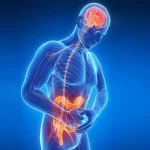Key Points:
- Chronic pain is defined as pain lasting longer than three months and includes both primary and secondary syndromes
- Traditional therapies—NSAIDs, opioids, steroids—often deliver limited relief and carry risks
- Emerging non-drug and device-based solutions (CBT, mindfulness, neuromodulation) show growing evidence
- Self-management tools and digital innovations empower users to improve quality of life
- Evidence-based coverage and guideline awareness help people make informed choices
From Daily Discomfort to Debilitating Pain: Why We Need to Talk About It
Imagine waking up each morning to a dull ache that never goes away. It’s been there for months—perhaps years. You’ve tried over‑the‑counter drugs, rest, even physical therapy—but relief is fleeting. This kind of pain, which transforms many ordinary days into a haze of fatigue and frustration, is far more common than most people realize.
The Silent Epidemic Affecting Millions
Chronic pain affects up to 20% of adults in the U.S., and the ripple effects touch nearly every corner of life—from lost work productivity to diminished mental health. It’s a major driver of health care use and a top cause of long-term disability. But despite its impact, chronic pain often goes underdiagnosed, misunderstood, or treated with short-term fixes. Fortunately, the science of pain is evolving—and so are the solutions.
What Exactly Is Chronic Pain—and How Is It Diagnosed?
According to the International Association for the Study of Pain (IASP), chronic pain is pain that persists or recurs for more than three months, beyond the typical healing period. The World Health Organization’s ICD‑11 offers new classifications that help health professionals differentiate between:
- Primary chronic pain, such as widespread pain (commonly seen in fibromyalgia-type symptoms)
- Secondary chronic pain, resulting from specific causes like musculoskeletal injuries, nerve damage, inflammatory gut issues, or cancer-related conditions
A proper diagnosis should include not just the physical experience of pain, but also its emotional and functional effects—such as sleep problems, mood changes, and reduced participation in daily life12.
How Chronic Pain Rewires the Brain and Body
What makes chronic pain so persistent? It’s not just that the original injury hasn’t healed—it’s that the body and brain have fundamentally changed. Here’s how:
- Central sensitization occurs when the nervous system becomes overly reactive, amplifying pain signals
- Neuroinflammation disrupts the way nerves communicate, triggering ongoing discomfort even after tissues appear healed
- Brain plasticity changes, seen in functional MRI studies, show altered networks that continue to send pain signals unnecessarily
- Epigenetic factors, such as changes in how pain-related genes express themselves, can further lock in the cycle of pain3
In short, chronic pain isn’t just in the body—it’s encoded in the brain’s memory and wiring.
The Emotional Toll: When Pain Affects the Mind and Mood
Chronic pain rarely travels alone. It’s closely linked with anxious thoughts, depressive states, and trauma. In fact, research shows that individuals living with chronic pain are two to three times more likely to experience mental health challenges4.
Common patterns include:
- Pain catastrophizing: obsessively anticipating the worst outcomes
- Fear avoidance: skipping activities to prevent pain, which can worsen mobility and isolation
- Social withdrawal: leading to strained relationships, loneliness, and identity loss
Why Traditional Pain Relief Often Falls Short
For decades, the go-to therapies for chronic pain have included:
- Non-steroidal anti-inflammatory drugs (NSAIDs)
- Opioid medications
- Corticosteroid injections
While these may help with short-term pain flare-ups, they often fall short in the long run. NSAIDs can harm the gut and heart when overused. Opioids carry high risks of dependency, tolerance, and overdose—contributing to a public health crisis. And corticosteroids may offer only temporary relief with long-term metabolic side effects56.
A Shift in Thinking: What Pain Experts Now Recommend
Pain researchers and clinical societies increasingly recommend a shift toward multimodal care—an approach that blends biological, psychological, and social strategies. This means moving beyond a pill-for-every-ill mentality and embracing tools that re-educate the nervous system, build resilience, and support long-term quality of life.
Emerging Approaches to Relief
Retraining the Brain: Mind‑Body Tools That Work
Evidence-backed psychological therapies are helping users reclaim control over their pain experience:
- Cognitive Behavioral Therapy (CBT) for pain teaches users to challenge distorted pain beliefs and develop healthier responses
- Acceptance and Commitment Therapy (ACT) integrates mindfulness and values-based living to reduce distress
- Pain Reprocessing Therapy (PRT) works to retrain the brain’s interpretation of pain as a non-threat, reducing pain in many cases7
- Mindfulness-Based Pain Management (MBPM) focuses on kindness, body awareness, and emotional acceptance8
Rewiring Pain with Electricity: Neuromodulation Explained
Device-based solutions are offering new hope:
- TENS units (transcutaneous electrical nerve stimulation): a 2022 meta-analysis in BMJ Open supports TENS for various types of chronic pain, with minimal serious adverse events9
- Vagus nerve stimulation (taVNS): early studies show promise for reducing inflammatory and nervous system-related symptoms, though experts caution on the effectiveness of unverified consumer devices10
- Implantable neuromodulation systems are being refined with closed-loop feedback, which tailors stimulation to activity in real time11
Everyday Solutions: Movement, Diet, and Ancient Tools
Integrative practices are now recognized as important contributors to pain relief:
- Yoga, tai chi, massage, and acupuncture improve circulation, lower stress hormones, and reduce muscle tension
- Anti-inflammatory eating—think whole foods, healthy fats, and fiber—can reduce systemic inflammation
- Gut health and microbiome balance are increasingly linked to chronic inflammation
- Sleep hygiene and regular movement are foundational lifestyle pillars for pain management
Pain Relief Goes Digital: Apps, VR, and Smart Devices
Digital health is reshaping the pain landscape:
- Symptom-tracking apps help users identify flare-up triggers and monitor daily progress
- Virtual reality therapy offers immersive distraction during peak pain episodes
- Wearables and biofeedback apps can promote relaxation and nervous system regulation
- Personal Danger Signals Reprocessing (PDSR), a digital group therapy model, showed significant reductions in pain interference, mood symptoms, and catastrophizing in early-stage trials (Cohen’s d ≈ 1.5–1.8)12
Moving Forward: Tools, Therapies, and Hope
If you’re living with chronic pain, consider these steps:
- Get a proper diagnosis—ask about ICD-11 classifications for chronic pain
- Explore brain-based therapies like CBT, ACT, or mindfulness
- Research neuromodulation options—and confirm if they are CE-marked or FDA-cleared
- Try integrative practices—movement, food, and gentle therapies can add up
- Use digital support tools—apps, journals, and online programs can build momentum
- Seek community and support—peer groups and pain education programs boost resilience
Chronic pain is real—but it is not the end of the story. With evolving science, whole-person care, and the right tools, many people are rewriting their pain experience and reclaiming their quality of life.
The article does not in any way constitute as medical advice. Please seek consultation with a licensed medical professional before starting any treatment. This website may receive commissions from the links or products mentioned in this article.
Subscribe for Free for more insightful health articles tailored to your needs.
Sources
- IASP Definition of Chronic Pain – https://www.iasp-pain.org/advocacy/definitions-of-chronic-pain-syndromes/
- WHO ICD-11 Classification – https://www.medcentral.com/pain/finally-systematic-classification-pain-icd-11
- Epigenetics of Chronic Pain – https://en.wikipedia.org/wiki/Epigenetics_of_chronic_pain
- Chronic Pain and Mental Health – https://www.phc.ox.ac.uk/publications/1490011
- CDC Opioid Guidelines – https://www.cdc.gov/opioids/guidelines/index.html
- Risks of Long-term NSAID Use – https://www.ncbi.nlm.nih.gov/pmc/articles/PMC6462873/
- Washington Post: Pain Reprocessing Therapy – https://www.washingtonpost.com/wellness/2025/07/28/chronic-pain-cognitive-behavioral-therapy/
- MBPM Overview – https://en.wikipedia.org/wiki/Mindfulness-based_pain_management
- BMJ Open Meta-analysis of TENS – https://bmjopen.bmj.com/content/12/2/e051073
- VNS Device Caveats – https://nypost.com/2025/05/14/health/beware-this-common-medical-device-scam-no-way-to-know/
- Closed-Loop Neuromodulation Review – https://link.springer.com/article/10.1007/s11916-025-01374-3
- PDSR Trial Results – https://arxiv.org/abs/2502.12106
- Choi, H., Song, J.-J., Fregni, F., & others. (2024). Transcutaneous vagus nerve stimulation effects on chronic pain: A meta-analysis. Pain Reports, 9(4), e1102. https://doi.org/10.1097/PR9.0000000000001102 – This recent meta-analysis shows that non-invasive vagus nerve stimulation (tVNS) may reduce pain intensity in chronic pain conditions—supporting the article’s claim about vagus-nerve-based neuromodulation for pain relief.
- Andersson, U., Tracey, K. J. (2012). Reflex principles of immunological regulation. Journal of Internal Medicine, 267(2), 89-98. https://doi.org/10.1111/j.1365-2796.2009.02234.x – This classic review outlines the “cholinergic anti-inflammatory reflex,” in which the vagus nerve modulates immune and inflammatory responses—providing mechanistic backing for chronic pain driven by inflammation.
- Johnson, R. L., & Wilson, C. G. (2018). A review of vagus nerve stimulation as a therapeutic intervention. Journal of Inflammation Research, 11, 203-213. https://doi.org/10.2147/JIR.S163248 – This review covers therapeutic uses of VNS (including pain) and its mechanisms (affecting nociception and inflammation). It provides context for how vagus-nerve modulation could apply to chronic pain management.
- Busse, W. W., Lemanske, R. F., Jr., & Gern, J. E. (2010). Role of nerve-innervation and immune interactions in persistent pain and inflammatory conditions. Journal of Allergy and Clinical Immunology, 125(2 Suppl 2), S92-S96. https://doi.org/10.1016/j.jaci.2009.12.970 – This article links neural-immune cross-talk to chronic inflammation and pain, supporting the premise that neuromodulation (like vagus-nerve intervention) can play a role in managing pain beyond just pharmacologic treatment.
- Busch, V., Zeman, F., Heckel, A., Menne, F., Ellrich, J., & Eichhammer, P. (2013). The effect of transcutaneous vagus nerve stimulation on pain perception – An experimental study. Brain Stimulation, 6(2), 202-209. https://doi.org/10.1016/j.brs.2012.04.006 – This experimental study demonstrates that auricular vagus nerve stimulation can alter pain thresholds—bolstering the article’s suggestion of neuromodulatory approaches to chronic pain relief.




